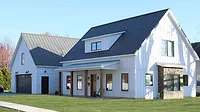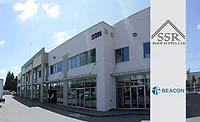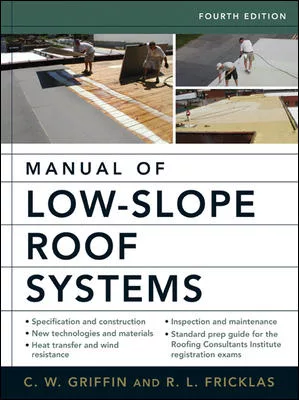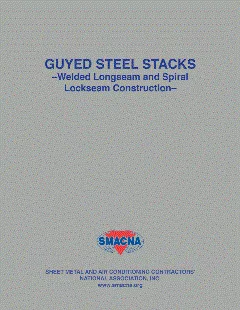Galvalume SSR Panels
Providing Durable Roofing for the Life of the Building
One of the most rewarding aspects of installing a roof is the knowledge that you have provided excellent, long-lasting value for your customer. This applies not only to workmanship, but also to the materials used for the roof. When metal roofing is selected, the choice of Galvalume® sheet roofing panels is frequently made. This product consists of a steel-sheet substrate coated on both surfaces with a 55-percent aluminum-zinc alloy coating (ASTM A792). The product is widely available around the world and has been successfully deployed in the construction marketplace since 1972. Yet in that time period, the actual Galvalume panel service life has not been firmly established, primarily because end of life for properly installed Galvalume roofing panels has not been observed on actual roofs.
For more than 25 years, visual field inspection surveys of low-slope roofing have been conducted on a regular basis by roofing industry professionals in attempts to get a handle on this product’s expected service life. While these surveys have continued to report excellent overall performance, the fact remained that a more quantitative method of assessment was needed. Such a method has now been developed. This novel inspection and analysis method, peer-reviewed and published in the Journal of ASTM [1], involves analytical corrosion measurements of Galvalume standing seam roof (SSR) panels, plus visual assessment of associated roof ancillaries, including sealants, fasteners, flashings, curbs, gutter systems, roof penetrations and profile closures to predict the service life of the total Galvalume SSR system when built using today’s best practices.
In an industry study sponsored by the Zinc-Aluminum Coaters Association and the Metal Construction Association, this new method was used to evaluate 10 unpainted Galvalume low-slope SSR systems ranging in age from 20 to 35 years and located in four different climate zones in the United States. While the full report predicting the service life of the total roof system is still in preparation, the results for the Galvalume SSR panels themselves on these 10 roofs are reported below. These results provide clear evidence of the excellent, long-term durability of Galvalume SSR panels. As such, they produce a significant, beneficial impact for the building owner in terms of the calculations used for Green Building Rating Systems and life-cycle analyses for both newly built and retrofit roofing applications.
Figure 1 shows all 10 roof locations on a map indicating the average pH of the precipitation across the United States, with lower pH values indicating more corrosive, acidic rainfall.[2] The 1999 map was used as it represents a mid-way point of precipitation pH improvement for the roof inspection sites between the late 1970s, when most of these roofs were installed, and today. With the exception of one 20-year-old roof, the roof ages ranged from 29 to 35 years.
Using a portable magnetic induction instrument, Galvalume coating thicknesses were measured on a number of panels to select a representative panel for sampling. The amount of corrosion that had occurred was then determined by analyzing samples removed from one of the panels. The technique involved disassembling the end lap and removing a piece of the roof from an area that was exposed to the environment and from the adjacent overlapped area which was effectively protected from the environment. The technique is shown in the mock-up SSR in Figure 2.
Upon examination, the butyl sealant typically showed a very pliable and tacky consistency. The result was an excellent, watertight joint. The photograph in Figure 3 shows the elasticity and webbing exhibited by the butyl sealant in one of these disassembled end laps after more than 30 years. Such performance was typical of the roofs in this study and indicates the long-term water-tightness to be expected from these SSR systems when high-quality butyl sealant formulations are used. After sampling, the end lap was subsequently reassembled with new butyl polymer tape sealants, supplemented with tube-grade butyl polymer as necessary to ensure a complete, weather-tight seal on the new section.
Based on independent laboratory measurements, the corrosion rate in g/m2/yr was calculated for each roof by dividing the amount of corrosion loss that was measured on the sample exposed to the atmosphere by the age of the roof. Details of this analytical technique may be found elsewhere. [1] Using these corrosion rates, the project panel service life can be calculated as the time required for total coating loss from the top surface due to corrosion. This was done assuming the roof panels would be installed today with material ordered at a nominal coating mass of 165 g/m2 (AZ55), which is representative of most bare Galvalume SSR systems today.
These projected panel service lives are plotted in Figure 4 against the precipitation pH values [2] recorded near the respective building locations. While these values vary as a function of local precipitation pH, they are, nevertheless, in good agreement with other studies. [3-5]
The reference line at 60 years is significant in that it represents the “assumed building service life” in calculations of life-cycle analysis by the Athena Sustainable Materials Institute. [6]
It is also worthy of note that environmental conditions have improved significantly in the United States since most of the buildings in this study were erected more than 30 years ago. This is clearly seen in Figure 5, in which the change in precipitation pH is plotted vs. time for a site located in Ohio near one of the building locations in this study. The pH has improved from a value of about 4.4 in 1999 to a value of 4.8 in 2010. Thus if the current-day pH values are used in the service life equation of Figure 4, the projected panel service life can be calculated for a building that would be constructed today using best practices. For example, in the case of this location in Ohio, the projected panel service life improves from a value of about 86 years (pH of 4.4) to a value of about 119 years (pH of 4.8). That is to say, the Galvalume panel service lives reported in this study, while significant in their own right, represent conservative estimates of the service lives to be expected on buildings erected today.
In conclusion, the data from this project support the proposition that a Galvalume SSR system could be installed today on new or retrofit low-slope roof systems in a wide range of environments and not require replacement during the building’s entire service life. Of course, proper roof inspections and maintenance associated with roof ancillaries would still be required, as they are with any other roof system. But the projected service lives demonstrated in this study clearly demonstrate the sustainable benefits of using Galvalume-coated steel roof panels for new and retrofit applications.
Acknowledgements:
The author would like to acknowledge the ZAC Association and the MCA for its support. The author is also grateful for the assistance of R. Haddock, C. Howard, J. Wilson, A. Humayun, D. Field, W. Gleeson and B. Shedden, and for the participation of many building dealers and owners.
References:
1.Haddock, R. and Dutton, R.J., “Service Life Assessment of a Low-Slope 55% Al-Zn Alloy-Coated Steel Standing Seam Roof System,” Journal of ASTM International, Vol. 8 (8), September 2011.
2.National Atmospheric Deposition Program/National Trends Network, http://nadp.sws.uiuc.edu.
3.Townsend, H.E. and Borzillo, A.R., “55% Al-Zn Alloy Coated Sheet Steel: The Versatile, Long Lasting Building Panel Steel,” Proceedings of the 5th International Conference on Zinc Coated Sheet Steel, Birmingham, U.K., June 12-13, 1997, European General Galvanizers Association, Surrey, U.K.
4.Townsend, H.E., “Atmospheric Corrosion Resistance of Skyward- and Groundward-Exposed Surfaces of Zinc- and 55% Al-Zn Alloy-Coated Steel Sheet,” Corrosion, Vol. 54 (7), 1998, pp. 561-565.
5.Willis, D.J., “Performance of 55% Al-Zn Coated Steel Sheets Used in Residential Houses in Australia,” Proceedings of the 4th International Conference on Zinc and Zinc Alloy Coated Steel Sheet (GALVATECH ’98), Chiba, Japan, The Iron and Steel Institute of Japan, Tokyo, Japan.
6.Athena Sustainable Materials Institute, http://athenasmi.org.
One of the most rewarding aspects of installing a roof is the knowledge that you have provided excellent, long-lasting value for your customer. This applies not only to workmanship, but also to the materials used for the roof. When metal roofing is selected, the choice of Galvalume® sheet roofing panels is frequently made. This product consists of a steel-sheet substrate coated on both surfaces with a 55-percent aluminum-zinc alloy coating (ASTM A792). The product is widely available around the world and has been successfully deployed in the construction marketplace since 1972. Yet in that time period, the actual Galvalume panel service life has not been firmly established, primarily because end of life for properly installed Galvalume roofing panels has not been observed on actual roofs.
For more than 25 years, visual field inspection surveys of low-slope roofing have been conducted on a regular basis by roofing industry professionals in attempts to get a handle on this product’s expected service life. While these surveys have continued to report excellent overall performance, the fact remained that a more quantitative method of assessment was needed. Such a method has now been developed. This novel inspection and analysis method, peer-reviewed and published in the Journal of ASTM [1], involves analytical corrosion measurements of Galvalume standing seam roof (SSR) panels, plus visual assessment of associated roof ancillaries, including sealants, fasteners, flashings, curbs, gutter systems, roof penetrations and profile closures to predict the service life of the total Galvalume SSR system when built using today’s best practices.
In an industry study sponsored by the Zinc-Aluminum Coaters Association and the Metal Construction Association, this new method was used to evaluate 10 unpainted Galvalume low-slope SSR systems ranging in age from 20 to 35 years and located in four different climate zones in the United States. While the full report predicting the service life of the total roof system is still in preparation, the results for the Galvalume SSR panels themselves on these 10 roofs are reported below. These results provide clear evidence of the excellent, long-term durability of Galvalume SSR panels. As such, they produce a significant, beneficial impact for the building owner in terms of the calculations used for Green Building Rating Systems and life-cycle analyses for both newly built and retrofit roofing applications.
Figure 1 shows all 10 roof locations on a map indicating the average pH of the precipitation across the United States, with lower pH values indicating more corrosive, acidic rainfall.[2] The 1999 map was used as it represents a mid-way point of precipitation pH improvement for the roof inspection sites between the late 1970s, when most of these roofs were installed, and today. With the exception of one 20-year-old roof, the roof ages ranged from 29 to 35 years.
Using a portable magnetic induction instrument, Galvalume coating thicknesses were measured on a number of panels to select a representative panel for sampling. The amount of corrosion that had occurred was then determined by analyzing samples removed from one of the panels. The technique involved disassembling the end lap and removing a piece of the roof from an area that was exposed to the environment and from the adjacent overlapped area which was effectively protected from the environment. The technique is shown in the mock-up SSR in Figure 2.
Upon examination, the butyl sealant typically showed a very pliable and tacky consistency. The result was an excellent, watertight joint. The photograph in Figure 3 shows the elasticity and webbing exhibited by the butyl sealant in one of these disassembled end laps after more than 30 years. Such performance was typical of the roofs in this study and indicates the long-term water-tightness to be expected from these SSR systems when high-quality butyl sealant formulations are used. After sampling, the end lap was subsequently reassembled with new butyl polymer tape sealants, supplemented with tube-grade butyl polymer as necessary to ensure a complete, weather-tight seal on the new section.
Based on independent laboratory measurements, the corrosion rate in g/m2/yr was calculated for each roof by dividing the amount of corrosion loss that was measured on the sample exposed to the atmosphere by the age of the roof. Details of this analytical technique may be found elsewhere. [1] Using these corrosion rates, the project panel service life can be calculated as the time required for total coating loss from the top surface due to corrosion. This was done assuming the roof panels would be installed today with material ordered at a nominal coating mass of 165 g/m2 (AZ55), which is representative of most bare Galvalume SSR systems today.
These projected panel service lives are plotted in Figure 4 against the precipitation pH values [2] recorded near the respective building locations. While these values vary as a function of local precipitation pH, they are, nevertheless, in good agreement with other studies. [3-5]
The reference line at 60 years is significant in that it represents the “assumed building service life” in calculations of life-cycle analysis by the Athena Sustainable Materials Institute. [6]
It is also worthy of note that environmental conditions have improved significantly in the United States since most of the buildings in this study were erected more than 30 years ago. This is clearly seen in Figure 5, in which the change in precipitation pH is plotted vs. time for a site located in Ohio near one of the building locations in this study. The pH has improved from a value of about 4.4 in 1999 to a value of 4.8 in 2010. Thus if the current-day pH values are used in the service life equation of Figure 4, the projected panel service life can be calculated for a building that would be constructed today using best practices. For example, in the case of this location in Ohio, the projected panel service life improves from a value of about 86 years (pH of 4.4) to a value of about 119 years (pH of 4.8). That is to say, the Galvalume panel service lives reported in this study, while significant in their own right, represent conservative estimates of the service lives to be expected on buildings erected today.
In conclusion, the data from this project support the proposition that a Galvalume SSR system could be installed today on new or retrofit low-slope roof systems in a wide range of environments and not require replacement during the building’s entire service life. Of course, proper roof inspections and maintenance associated with roof ancillaries would still be required, as they are with any other roof system. But the projected service lives demonstrated in this study clearly demonstrate the sustainable benefits of using Galvalume-coated steel roof panels for new and retrofit applications.
Ron Dutton is president of Ron Dutton Consulting Services in Annapolis, Md. He provides technical services for new product development, field failure analysis and product training for the metal construction and appliance industries. He can be reached at 443-569-2030 or ron.dutton@verizon.net.
Acknowledgements:
The author would like to acknowledge the ZAC Association and the MCA for its support. The author is also grateful for the assistance of R. Haddock, C. Howard, J. Wilson, A. Humayun, D. Field, W. Gleeson and B. Shedden, and for the participation of many building dealers and owners.
References:
1. Haddock, R. and Dutton, R.J., “Service Life Assessment of a Low-Slope 55% Al-Zn Alloy-Coated Steel Standing Seam Roof System,” Journal of ASTM International, Vol. 8 (8), September 2011.
2. National Atmospheric Deposition Program/National Trends Network, http://nadp.sws.uiuc.edu.
3. Townsend, H.E. and Borzillo, A.R., “55% Al-Zn Alloy Coated Sheet Steel: The Versatile, Long Lasting Building Panel Steel,” Proceedings of the 5th International Conference on Zinc Coated Sheet Steel, Birmingham, U.K., June 12-13, 1997, European General Galvanizers Association, Surrey, U.K.
4. Townsend, H.E., “Atmospheric Corrosion Resistance of Skyward- and Groundward-Exposed Surfaces of Zinc- and 55% Al-Zn Alloy-Coated Steel Sheet,” Corrosion, Vol. 54 (7), 1998, pp. 561-565.
5. Willis, D.J., “Performance of 55% Al-Zn Coated Steel Sheets Used in Residential Houses in Australia,” Proceedings of the 4th International Conference on Zinc and Zinc Alloy Coated Steel Sheet (GALVATECH ’98), Chiba, Japan, The Iron and Steel Institute of Japan, Tokyo, Japan.
6. Athena Sustainable Materials Institute, http://athenasmi.org.Looking for a reprint of this article?
From high-res PDFs to custom plaques, order your copy today!







